This is a new series called Portait of a Trader. The first one of this series is about my good friend at MBC Securities, Clockwork, who started with me in the training class of summer 2011. It will reference a lot of what happened in Prop Trader Series, which I suggest reading first, although I do try reference anything relevant. Additional author’s notes in the footnote: 1The idea of continuously writing about my own experiences started to feel boring, so I wanted to try something different. Instead, I wanted to share the stories of other profitable traders I’ve encountered over the years. While the trading media market is flooded with interview-based books and countless trading podcasts, I wanted to try a narrative crafted in the third person. This was inspired by a great chapter in “Enhancing Trader Performance” by Brett Steenbarger, where he delves into the success story of futures prop trader Scott Pulcini in a segment titled “The Making and Remaking of an Expert Trader”. I read it when I was 21 and it stuck with me all these years I’m hopeful you’ll enjoy reading this and can also extract some insights from the many diverse paths of successful trading.
Portrait of a Trader as a Young Man
Growing up, Stephen liked to play multiplayer online role playing games (MMORPGs). He enjoyed immersing himself in a virtual ecosystem where he could interact with other players all around the world. Stephen had evolved past the point of feeling satisfaction from the “normal way” to enjoy games, which was to defeat bosses and complete quests. He instead found himself addicted to the economic subset of the game–that is to say, he liked to farm items and then trade them on the online marketplace or on Ebay.
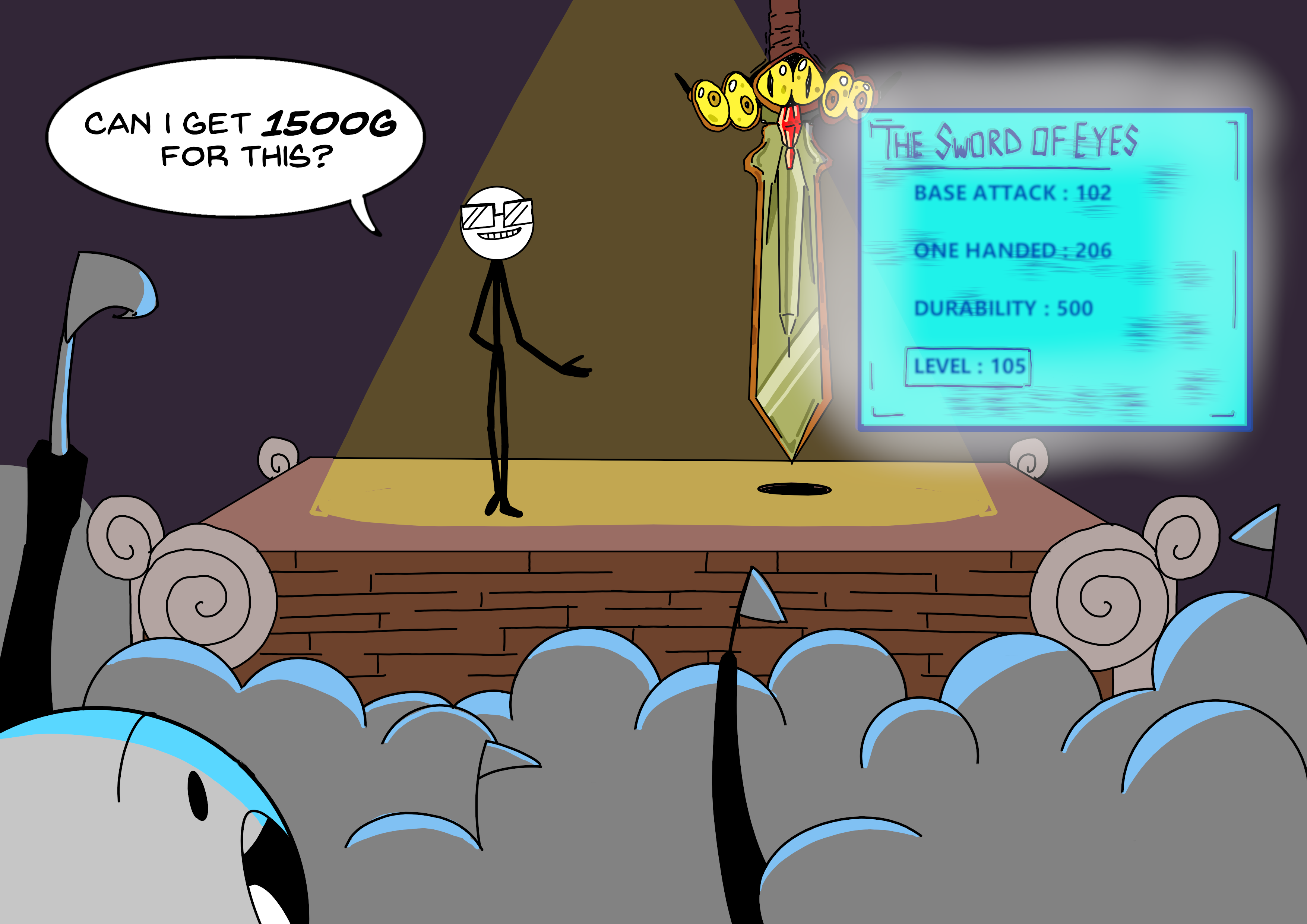
So Stephen would grind away for items all night long and this took a lot of time away from studying for school. His parents were your typical straight-laced Asian parents who emigrated from Taiwan in 2006. They wanted Stephen to go to school, work hard, and become a pharmacist. So naturally, they told him to stop gaming so much and get back to the books. So now he can’t find as much time for gaming but he still wanted to make some coin. So he decided… let’s just skip the hours of laborious in-game farming and just dive straight to the marketplace itself. He shifted his approach: just scoop up items already farmed by someone else at cheap prices when there was too much inventory. Keep hand-written notes on item sales to observe trends. Then flip the item for higher prices when supply dries up. He ended up tripling his small bank account at the time by just quickly flipping items as a middleman. Early on we can see Stephen didn’t want to pursue traditional professions, he wanted to be in the market–buying low and selling high.
Later on Stephen would attend UC Berkeley as an economics major. With newfound independence living in college dorms, he again found himself spending way too much gaming. This time, he was into Dota–the popular Warcraft III custom mod that would later ignite a decade-long frenzy into MOBA2Multiplayer online battle arena games. There was no economic aspect to Dota, he moreso enjoyed the competition of faster, more direct team-vs-team gameplay. His grades were mediocre and he didn’t really think much about life after graduation. He had a vague idea that he would just follow what other econ or business majors pursued–maybe get into banking or try to get an MBA. It wasn’t really motivating until he discovered the stock market. In his third year, Stephen met a family friend who had doubled his account by trading options on triple-levered financial ETF’s FAZ and FAS, which prompted Stephen to open up his own retail trading account. After just a short period dabbling in options strategies, he knew: that’s what I want to do after I graduate. He figured that the best path to actually learn how to trade would be through mentorship at a professional trading firm–whichever one would take him. He applied to all the top trading firms, names like Susquehanna, Optiver, Trillium, Jane Street, and First New York. None of them gave him a response.
Instead, he only got accepted by a small equities firm with a middling reputation–a firm called MBC Securities. Not only would this third-rate firm not pay him any salary, they were actually going to *charge him* money for taking the position. They called it a tuition fee for teaching him how to trade and for Stephen, said tuition fee would be $6,000. He omitted this fact to his parents and tried to legitimize it by calling it a “Wall Street trader” job. Even though this position seemed suspect, his choice was either MBC or some of the traditional finance jobs he applied to as a backup. He had one offer from Charles Schwab to do commerical banking in Jackson, Mississippi for a $40,000 annual salary. Eh.
There aren’t any Asians in Mississippi. I’m not going there. New York is my dream. I’m just going to go for it.
Portrait of a Trader as a Rookie
In the spring of 2011, I crossed paths with Stephen online while playing Dota purely by chance. Initially, it wasn’t me but my cousin who teamed up with him in a randomly generated match. They kept winning and kept playing together, so they added each other as chat buddies. As they bonded over Dota, being both fourth-year college students, they also discussed their post-graduation futures. Stephen mentioned his intention to start trading at MBC Securities—the same firm I was headed to, a fact my cousin knew. Subsequently, my cousin introduced me to Stephen, making him the first person from our training class that I met. The moniker I bestowed upon him in the Prop Trader Series is a nod to this encounter—Clockwork, inspired by a playable hero in Dota. The nickname also aptly describes his remarkable trading consistency–which you’ll soon read about.
Three months later, Clockwork has transitioned into a CBOE-registered MBC/Y5 trader on a bustling New York City trading floor. The first month is all about the training program and the demo. It’s about ingratiating oneself into MBC’s firm culture–work hard, learn how to trade responsibly, do your job and get into good trades. Victor, MBC’s managing partner, sets the expectation that we should be profitable traders within 3 years. But Clockwork has bills to pay and limited support and a raw hunger to win right away. He wants to be profitable as soon possible. He makes a habit to ask questions to everyone he perceives to be more knowledgable about markets. Our head trader Tuco. Our floor manager, CJ. And then me because I sat next to him.
One of the first things you notice about Clockwork is his reaction speed, honed from years of gaming. In the training program, we would learn a simple scalp called the “Mush” trade3(this was named after another MBC trader from an earlier era who made this trade his entire career at the time). The trade is pretty simple, there’s a big order at a whole number level on a stock–say $5.00. As the large order at 5.00 gets eaten up and volume increases, the trader attempts to snipe the last few remaining shares before the order is gone and the stock ticks through the level. The algo will likely raise the bid a few cents higher over the whole and you can sell into the strength. It’s an extremely low risk trade. Timing is key–too early and you’re stuck with a position before any momentum occurs and may have to hit out, too late and you’re eating the slippage and getting a price above the whole. By 2011, this trade was less about making money and more about understanding the mechanics of reading order flow and then reacting to it. Clockwork quickly developed excellent timing and loved to mush stocks. He took satisfaction in making 5 cents in 5 seconds. It was common practice for him to type through 100 stock symbols on the level II in the middle of a day to find Mush trade opportunities.
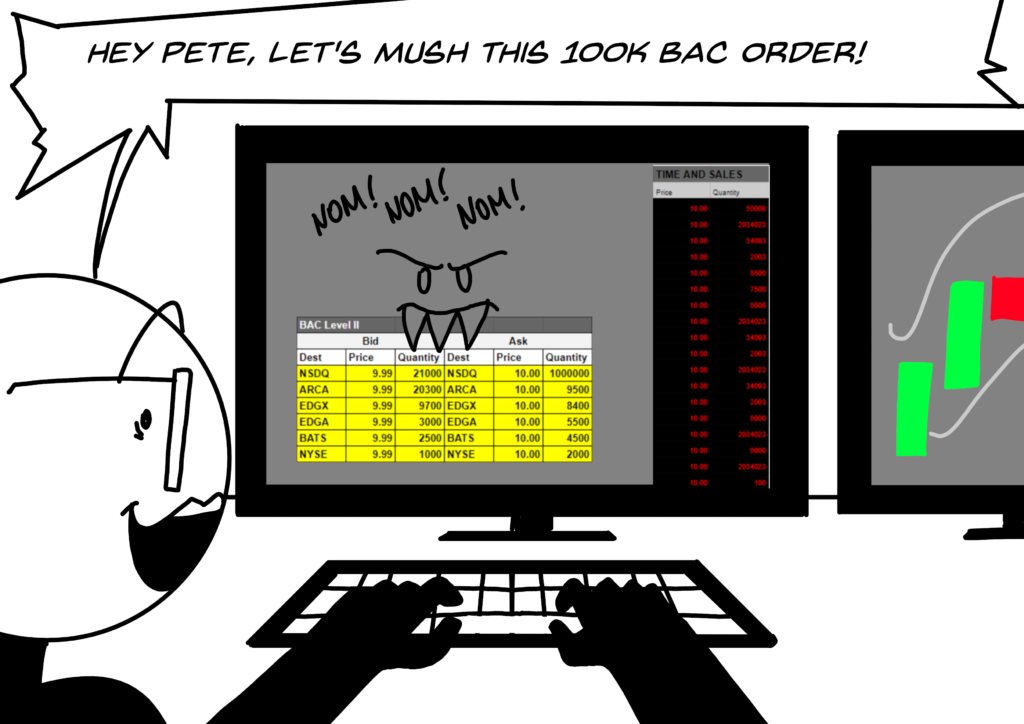
Everyone in the market has an aspect of the market that that feels innately connected to them. Some people like to analyze data. Some like fundamental research. Some people like to chart. They draw their trendlines and overlay all their moving averages and indicators into the charting interface. Scoot Brownler, the umbrella trading firm’s chief technical officer, would wake up at 6:30am every day and start ripping through charts. You could tell that he loves that aspect of being a trader. Clockwork? He loved to trade–meaning, he likes to push buttons to get in and out. He would usually trade all day from open to close, outpacing the entire training class in total shares traded and most stock symbols traded. If he was down $100, he’d chip away with $20-30 gains to get back to even, and then get to gross positive. For him, being red on the day was just an opportunity to find more trades to get green.
To make an all-too-fitting analogy, honing oneself as a trader sort of resembles the early stages of character building in an MMORPG. You have a finite amount of skill points and all these different attributes to put all your points into. Driven by a passion for active trading, Clockwork invested almost all his skill points into scalping.

Portrait of a Trader as a Marginal Trader
Common scenario: a stock breaks over a key level or range and we are trading it. We know our entry and we know our stops, but the fuzzy part is the expectation of where the stock will go and whether we can hold it to that point.
Clockwork: This stock can make a new high today. I just bought more.
He then “mushes” 2000 shares through the key breakout level. A few minutes later, the stock retraces back to entry point.
Clockwork: I sold most of it into that push.
Pete: You’re already out?! what happened to the stock making a new high?
Clockwork: 10-cent market, have to sell quickly. I can rebuy it here at same price now.
Pete: But it’s a worse trade now. It just showed you that it can’t break from its range.
Clockwork: Yeah but not before I make another 10 cents.
That conversation, one that we must have had a thousand times, describes where we were at in 2012. We can scalp to collect small margins but it can’t scale all that much. By 2011, the active day trading community predominantly focused on this one big question: Could day traders still make money scalping against HFT? Consider the timeline of significant market structure changes starting from 1996, when the SOES bandits made their presence known and started the golden age of day trading. In 2001, the NYSE transitions to decimal pricing, then in 2002, the NASDAQ implements SuperMontage, followed by NYSE hybridization in 2006. Many of these changes, one by one, would phase profitable scalpers out of the market. By 2011, the rise of HFT had rendered the market remarkably efficient on the micro timeframe, diminishing most of the old reliable plays from the scalper’s bag. Maxing out all of one’s skill points into scalping in the year 2012 may not have been the optimal development plan.
To respond to these changes, the new “meta”4(a gaming terminology for the community consensus of the best strategy to use in a specific game)at MBC became something management had labeled “Trades2Hold”. Instead of scalping 5-10 cents, you would aim to ride the entire intraday trend for multiple points. But the Trades2Hold style was considered position trading and Clockwork already put all his skill points into scalping. Consequently, a problematic habit had emerged–get used to making 5-10 cents all the time and that’s all you try to make. The breakaway moves on momentum stocks that can make your entire month that you were supposed to hold until the close–he kept missing out. They’re too volatile. Too spready. Too high priced, nominally. Require wider stops. Miss the best entry. And then when he was fortunate enough to get into stocks that had breakaway moves, what happened then? He sold too early into initial strength, because that’s what scalpers do. As an observer, I notice it didn’t bother him too much–at least on the outside. If I sold what would’ve been a monster gain way too early, I’d get mad.

Clockwork–well, he accepted who he was. While many on the desk struggled to try to adapt to the new Trades2Hold meta, he would mostly stick to his guns and continue scalping. He earned a reputation on the desk as a cautious trader (read: piker), dabbling only in low margin trades. To the uninitiated, ‘piker’ might sound like a disparaging label meant to mock traders reluctant to take significant risks. However, Clockwork’s strategy was underpinned by a steadfast resolve to finish each trading day in profit, no matter how modest. This disciplined approach bore fruit when he celebrated a remarkable streak of 30 out of 30 days in the green from April to May 2012. At 4 pm, as the closing bell chimed, he would reliably end the day with a green PnL, like clockwork. After accounting for split and trading fees (often a lot more for high frequency scalpers), the cumulative profits amounted to just a few thousand dollars, but his ability to never lose was a testament to his consistency and determination.
He had trading skills. He had prudent risk management. He had consistency. Victor had been touting him as one of the firm’s best young traders, even dedicating a chapter to him in his latest book, “The Gameplan”. He was then promoted to Junior Trader with a higher profit split. Despite his best efforts, his overall earnings power was still far from being able to match even the meager $40,000 salary he could have effortlessly collected as a conventional banker in Jackson, Mississippi. He’s just missing that one last thing… one last thing before making the important leap from subsistence-level marginal trader to a consistently profitable trader with life-changing earnings potential.
Portrait of a Trader as a Developing CPT
It’s March of 2013, days before the merger between MBC Securities and Western Trading Group (WTG). Things weren’t great. Neither of us had even netted $10,000 in the prior year despite trading millions of shares each month and spending 8 hours in the office daily grinding tape. NYC rent payments start to eat away at our meager savings and disillusionment starts to kick in. The initial glamour and promise of being a ‘Wall Street Trader’ was wearing off quickly.
We had a conversation about where we were at. We were stuck.
Pete: We barely make anything by scalping every day. Look at how much of our profit gets eaten up by split, commission, desk and data fees, and bullshit like that. We’re going to run out of money. Can’t keep going on like this.
Clockwork: We’d be making more working at McDonald’s then we do trading right now. That is very, very sad.
Everyone else in our training class had now left. On their way out, many of our colleagues harbored a negative sentiment about their experience at MBC Securities–it doesn’t seem possible to make real money there. Clicking buttons for 5-10 cents at a time…half of it eaten by fees and split… it’s not a sustainable business model. The Trades2Hold meta couldn’t find any footing as nobody had developed a reliable strategy to capture larger gains. There weren’t any traders at MBC demonstrating consistent profitability beyond subsistence wage levels and even the managing partners struggled to make money. Maybe we got tricked into coming here by this trading firm that promotes themselves via social media and only makes money off their education revenue. Clockwork found himself at a crossroads. When you’re faced with the ever looming possibility of failure, how do you choose to handle it?
Pete: Let’s just step up our size and either make a lot of money or we blow up. Then we could move on. I’ll move back to California, I’ll get a real job or go to law school.
Clockwork: Haha that’s right, we either make a lot of money or we go home. No more of this hard work all day to barely make any money. I always have my offer to be a banker in Jackson, Mississippi.
Sometimes we cope with humor. We put the reality out in the open–blow up your account and get fired. The “Wall Street Trader” dream you’ve romanticized since graduating? POOF. It’s gone. You gotta go home. Live with your parents. Go back to school or get a real job. If Clockwork had a string of bad trades5(uncharacteristic of him but it happens), he’d tell me something along the lines of…
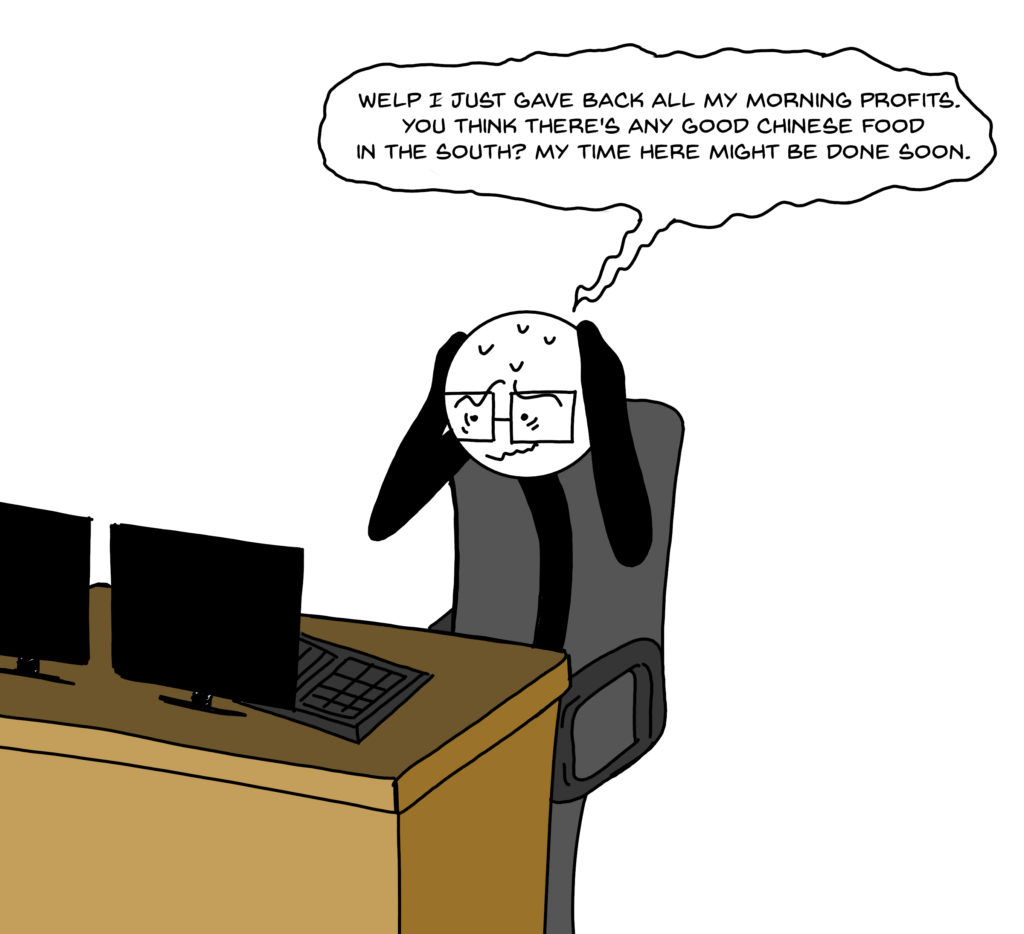
So we’d laugh it off and keep trading rather than dwell on the tough questions. But Clockwork had a lot more resolve behind all the goofing around. He sent an email to Victor, after a tough day where he round-tripped6(to round trip a move means to let a move that was initially in your favor go all the way back. for example, you buy ABC and you’re +1 in the money, then you let it go back to your stop to -1, you round tripped it) what would’ve been his personal best PnL. For an ultra consistent scalper, a large round trip in PnL is anathema. Don’t let winners turn into losers–that’s the scalper’s creed. In this e-mail, Clockwork chose to reflect on his larger goals rather than dwell on the day’s PnL.

I came across this picture while browsing on the Internet, which I thought was worth sharing. As shown on the pie chart, 90 percent of the population lives in the Comfort Zone. They are average, living a mediocre life. They are settling just for survival. They are depressed, tired, fearful, and often ask, “What if I can’t?” These descriptions are spot on. I’m going to be very honest, I identify myself with a couple descriptions mentioned above. Sometimes I’m fearful. Sometimes I doubt whether I can do it. But in the end, I managed to stay in the game and fought to conquer the biggest enemy, myself. So, what do I need to do to get out of the 90 percent, and become the top 10 percent? What characteristics do they possess? They are fearless. They have dreams. They are confident, always thinking “I can do it.” The sky is their limit. They have belief and passion. They seek wealth, success, financial freedom, fulfillment, and excitement. What makes those 10 percent so special is that they’re not mentally confined. They look to get better each day. They know they can get much better. I’m still very young. My priority should be looking to learn as much as I can, not how much I can make in the next week or two. I wouldn’t say I’m currently the 10 percent outside the 90 percent now. But I would say that I have improved a lot. Comparing myself with when I started, I have grown to be a better risk taker. I have strived to step outside of my comfort zone. I’m not settling like before. I’m more fearless than before. And I have bigger dreams than before. Yet, I still have a lot to improve and accomplish. Every day is a learning day for me. [Clockwork breaks down a trade he made in ADSK for a few paragraphs] I was a little bit depressed that I gave back my personal best. But honestly, what is that $250 going to mean to me in my trading career? I think I made the right choice for not settling. Now I know I’m capable of a new personal best. One day I’m sure that that new personal best will come.
He still held an optimism that he would make it. Maybe he just humored me when I felt down.
After the firm’s transition to WTG, Clockwork focused on his primary objective: increasing his risk tolerance. He approached this goal with caution, avoiding the temptation to indiscriminately make ‘YOLO bets’ on every single play. Instead, he adopted a methodical approach, anchored in two fundamental practices:
1. Meticulously journaling and reviewing each trade, aiming to define the core elements of his best trades
2. Evaluating his trades based on the insights gleaned from these reviews, and adjusting his size accordingly—allocating more to the highest-rated (A) trades, while being more conservative with B and C graded trades
Clockwork’s playbook was mostly centered on scalping for range breaks7(for more info on tight range breaks, read this chapter from Prop Trader Series) where he could trade in the direction of the initial momentum and use tight stops. However, he gradually refined his stock selection criteria, identifying the shared characteristics of the best range break plays. Eliminate illiquid crap. Find stocks that move. Try to add to winners and then hold onto them a little longer than he was comfortable with. His simple approach bore fruit in May 2013 when Clockwork achieved the highest monthly PnL among all MBC Junior Traders, earning $8,133. This improvement reinforced his conviction that achieving six-figure gains was not a matter of if, but when.
His secondary goal was to expand his playbook with different strategies. His solution was to simply emulate other profitable traders by identifying their best strategies via the WTG linked blotter system. This trait—eschewing the need to be the solitary genius in favor of embracing and appreciating effective strategies from others—is invaluable for any trader. Our mutual friend Tommy would often walk by Clockwork’s station to look at all his positions, and then remark “you’re like a spider with a finger in every pie.” It was very common to put on a new position and then seconds later you’d see Clockwork mirroring the trade.
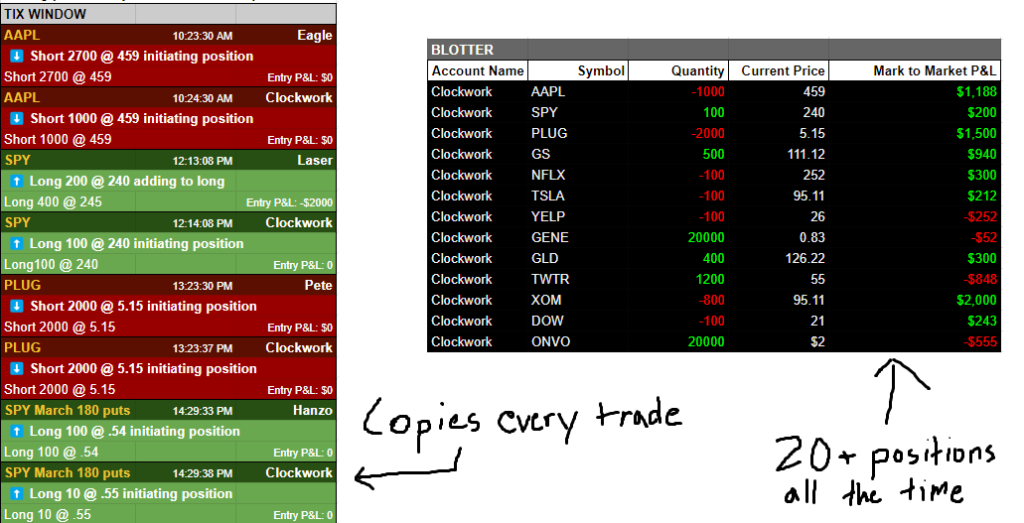
Jimmy found a range break play? He’s in. Eagle’s shorting AAPL? He’s in. Riggs is trading the Russell rebalance? He’s in. Mr. West doubles down on a plummeting stock, taking a ton of pain? Well, he may not dive in headfirst, but he keeps a keen eye on the stock, waiting for a potential setup to buy it safely.
The trader he copied the most? Obviously it would be the trader sitting directly next to him.

I made the Fannie Mae trade and that changed everything. MBC Securities was going to give traders access to trade OTCBB stocks for the first time. Clockwork saw how much money I made in a day and he knew… he’s gotta get into that shit right away. That’s the thing that will make him a bonafide CPT.
If PTO can make that kind of money, I know I can make it too.
Clockwork gets access to the OTC platform starting in August. OTC trading is a great fit for him because there aren’t any HFTs. He doesn’t have to transform his mindset and go against his natural tendencies. He gets to be himself–click buttons, scalp rapid moves in both directions, and rack up instant profits as if it’s all just a video game. Best of all, he has the perfect mentor for this strategy. So Clockwork empties all his remaining skill points into OTC trading and then he prays that there are still enough opportunities in the year for him to take advantage.

From August forward, every day between us involves talking shop about the mechanics of trading these OTC penny stocks. On one stock, we will notice volume has increased and there’s order flow coming in and we know it’s time to trade more frequently. Sometimes we notice it’s choppy and there’s a looser spread so better to wait. We talk about our fills on ECNs vs. market maker routes. We talk about what hits the scanner and what sectors are hot. On the big days where we play the most volatile moves, we talk through how the tape slows down so we know when to sell and lock in gains. Retail traders trade these OTC names and they have thoughts about where their stocks will go in their most optimistic scenarios–FNMA could go to $25 if the Treasury lets them earn! Blah blah blah–they’ll spam it all over social media. When you trade actively for a living, you can’t rely on that dreamland outcome to hit. It’s day by day and the focus is on all the little things. Clockwork’s now focused on tape-reading plays on volatile OTC names that are up/down 40-100% intraday, where he can scalp huge moves with good timing and execution.
After a couple tune-up months, Clockwork finds his footing trading liquid OTC names like FNMA and AAMRQ in October. He ends the month with a personal record PnL of $42,844–enough to crack the WTG top-10 for the first time in his career. He closes the year strong with additional 5-figure months in November and December, finishing the 2013 calendar year with $118,415. That’s good enough for second place among all MBC traders.
He’s excited. This is what he’s been waiting for–an actual profitable scalping strategy in the right market, where one accumulate 5-6 figure months without needing to take pain. It was just the beginning.
Portrait of a Trader as a Breakthrough CPT
In 2014, the Pot Stocks8(OTCBB pot names like MJNA, CBIS, PHOT, and MDBX) became en vogue and the OTC craze reached a peak at the MBC Securities desk. Penny stocks would trade from a few cents to a few dollars and offer amazing opportunities for skilled traders. Volume surged and spreads tightened, a great recipe for OTC scalpers. Clockwork would trade in and out of these stocks all day, racking up millions of shares for the month. At one point, his rapid scalping became so effective that the market makers threatened to deactivate OTC routing for the entire firm. They called it ‘toxic order flow’ and there was a whole ordeal about agreeing to certain stipulations on canceling orders. They’re just mad he’s taking their money. He finished the February 2014 with another personal record, tallying $81,811 in a month.

From making a $1000 in a month to making $81,811 in a month over the course of a year. Bonanza! He’s a certified CPT now. The best is yet to come.
The top trading stock for the company so far, FNMA, was gearing up for another significant surge in March 2014. Clockwork had already reaped over $70,000 in profits from trading this stock, yet he felt like he had barely scratched the surface. There hadn’t even been a massive A+ bounce setup yet, akin to the one where his friend Pete raked in $33,000 last year. That was, until now, with FNMA on another frenzied runup from $1 to $6, fueled by major hedge funds like Pershing Square and Fairholme. Now he was readying himself for what he thinks will be a huge trade.
On March 11th, FNMA starts to waterfall under $6. Clockwork makes his first entry when the first bid soaks at 4.50. He’s loading up but it seems like he’s getting filled way too quickly9this is a bad sign, look up adverse selection. Something feels off. The bid drops and he tries to hit out but he can’t. There’s a new wrinkle in the FNMA algo’s that’s throwing off all the scalpers who had previously crushed the stock–once the bid fails to hold, the ARCA ask cuts below the bid by 10 cents and shuts everyone out from immediate fills10(this is often called a “crossed market”–when the best ask is below the best bid). Now everyone’s jammed up and trying to get out at the same time. Clockwork’s unable to get out and taking unexpected drawdown. He decides to do something he’s never done before: hold the bag and add to his losing position. But the stock continues to blow through every held bid attempt and this just exacerbates his pain. His unrealized loss reaches -$50,000–once an unthinkable number for the most consistent winner at the firm. Finally around $3.20, there’s some stabilization. He buys the last bit he can muster, the stock finally turns, and he rides the bounce back to break even. Disaster averted.
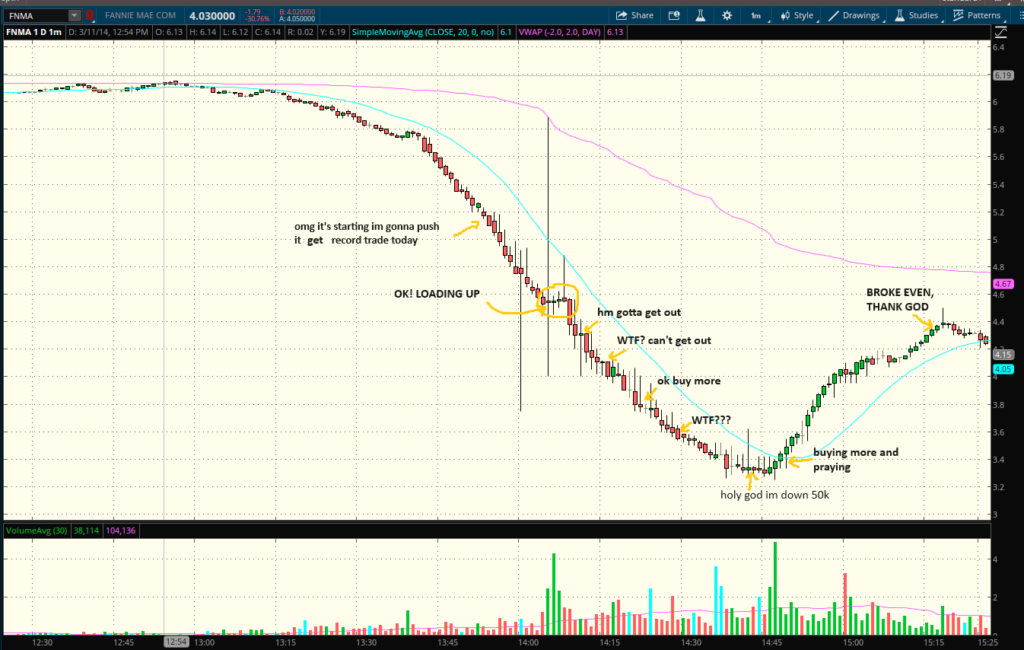
A few minutes after the close, he tells his trading buds that he drew down $50,000!!!! and that he felt he’d have a heart attack any moment!!! and that not being able to hit out of a stock when you want to is super fucking scary!!! He wants to emphasize just how traumatic it was for him. A moment after that, Victor summons Pete to this office. Clockwork has the sense that Pete lost quite a bit of money on this FNMA trade but he doesn’t know how much.
The next day, he’s just sitting alone with unmanned trading rigs to his left and right. Turns out he’s now the last trader remaining from MBC’s summer 2011 training class. He’s curious how much Pete lost but he’s too afraid to ask. He decides the best course of action is to just not mention it and move forward. He sends a gchat:
Hey P-To what stocks are you looking at today?
(To be continued in Part 2–the ensuing 10 years of Clockwork’s adventures in low float stocks, volatility halts, covid markets, and other prop trading bullshit.)

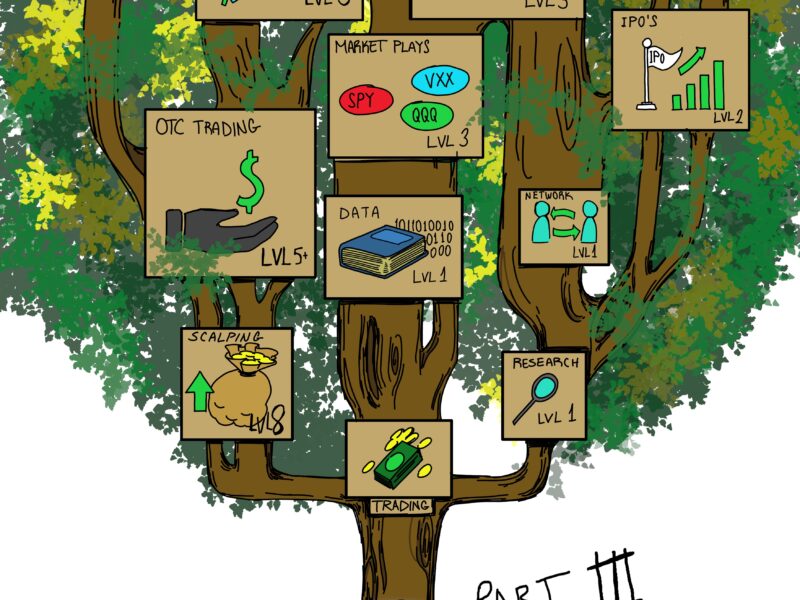


Great read, as usual, please keep them coming
Brilliant!
That trade on FNMA was insane! It never broke the down trendline and rebound. It’s a case of catching-the-falling-knife. It’s a lot easier to just short and cover when the stock shows sign of recovery. I made plenty of mistakes like this so definite this reminds me of all those painful losses.
It does look obvious to just wait for the first 5min green bar but OTC fills were very tricky and if you’re anxious about trying to trade size you jump the gun. Lagging signals leave you chasing size with market order where you don’t know where you will fill. The previous bounce plays you could trade the first held bid signal without fakeouts.
Keep em coming!
Great read PTO, keep em coming